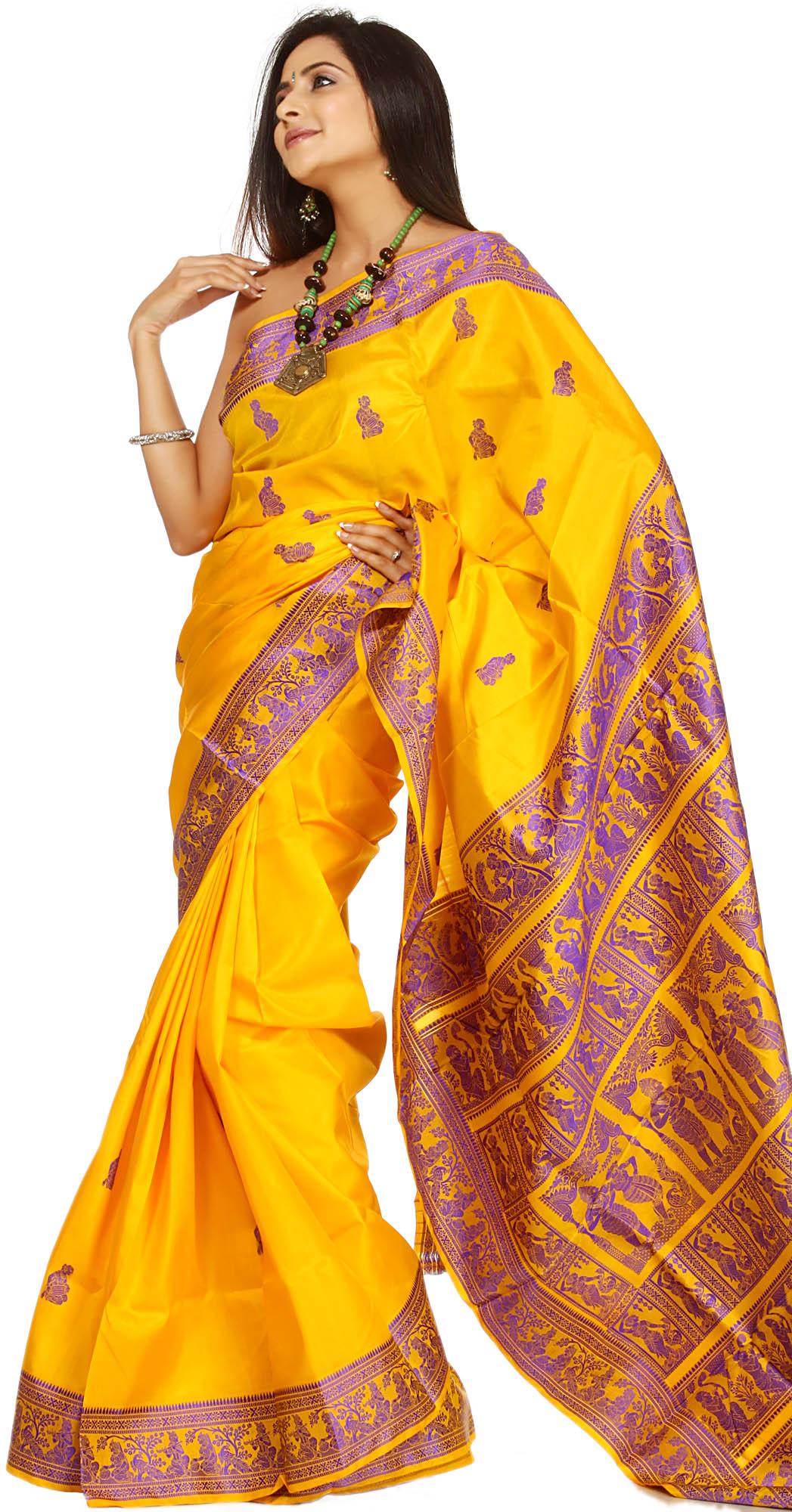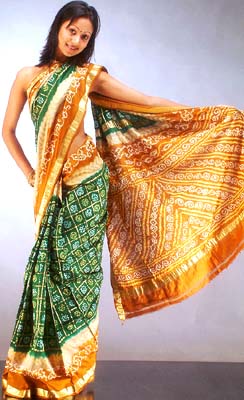Saris Biography
Source (google.com.pk)










Source (google.com.pk)
A sari or saree is a strip of unstitched cloth, worn by women, ranging from four to nine yards in length that is draped over the body in various styles which is native to the Indian Subcontinent.The word sari is derived from Sanskrit which means 'strip of cloth'and śāḍī or sāḍī in Prakrit, and which was corrupted to sāṛī in Hindi.The word 'Sattika' is mentioned as describing women's attire in ancient India in Buddhist Jain literature called Jatakas.This could be equivalent to modern day 'Sari'. The term for female bodice, the choli is derived from another ruling clan from south, the Cholas. Ranginess (meaning the 'river of kings'), a tenth century literary work by Kalhana, states that the Choli from the Deccan was introduced under the royal order in Kashmir. The concept of Pallava, the end piece in the sari, originated during the Pallavas period and named after the Pallavas, another ruling clan of Ancient Tamilakam.It is popular in India, Bangladesh, Pakistan, Nepal, Sri Lanka, Bhutan, Burma, Malaysia, and Singapore. The most common style is for the sari to be wrapped around the waist, with one end then draped over the shoulder, baring the midriff.The sari is usually worn over a petticoat (called lahaṅgā or lehenga in the north; langa, pavada, or pavadai in the south; chaniyo, parkar, ghaghra, or ghagaro in the west; and shaya in eastern India), with a blouse known as a choli or ravika forming the upper garment. The blouse has short sleeves and a low neck and is usually cropped at the midriff, and as such is particularly well-suited for wear in the sultry South Asian summers. Cholis may be backless or of a halter neck style. These are usually more dressy, with plenty of embellishments such as mirrors or embroidery, and may be worn on special occasions. Women in the armed forces, when wearing a sari uniform, don a short-sleeved shirt tucked in at the waist. The sari developed as a garment of its own in both South and North India at around the same time, and is in popular culture an epitome of Indian culture.The sari signified the grace of Indian women adequately displaying the curves at the right places. The tightly fitted, short blouse worn under a sari is a choli. Choli evolved as a form of clothing in the 10th century AD, and the first cholis were only front covering; the back was always bare but covered with end of saris pallu. Bodices of this type are still common in the state of Rajasthan. A sari or saree[note 1] is a strip of unstitched cloth, worn by women, ranging from four to nine yards in length that is draped over the body in various styles which is native to the Indian Subcontinent. The word sari is derived from Sanskrit which means 'strip of cloth' and śāḍī or sāḍī in Prakrit, and which was corrupted to sāṛī in Hindi. The word 'Sattika' is mentioned as describing women's attire in ancient India in Buddhist Jain literature called Jatakas.This could be equivalent to modern day 'Sari'.The term for female bodice, the choli is derived from another ruling clan from south, the Cholas.Rajatarangini (meaning the 'river of kings'), a tenth century literary work by Kalhana, states that the Choli from the Deccan was introduced under the royal order in Kashmir.The concept of Pallava, the end piece in the sari, originated during the Pallavas period and named after the Pallavas, another ruling clan of Ancient Tamilakam.It is popular in India, Bangladesh, Pakistan, Nepal, Sri Lanka, Bhutan, Burma, Malaysia, and Singapore. The most common style is for the sari to be wrapped around the waist, with one end then draped over the shoulder, baring the midriff.The sari is usually worn over a petticoat (called lahaṅgā or lehenga in the north; langa, pavada, or pavadai in the south; chaniyo, parkar, ghaghra, or ghagaro in the west; and shaya in eastern India), with a blouse known as a choli or ravika forming the upper garment. The blouse has short sleeves and a low neck and is usually cropped at the midriff, and as such is particularly well-suited for wear in the sultry South Asian summers. Cholis may be backless or of a halter neck style. These are usually more dressy, with plenty of embellishments such as mirrors or embroidery, and may be worn on special occasions. Women in the armed forces, when wearing a sari uniform, don a short-sleeved shirt tucked in at the waist. The sari developed as a garment of its own in both South and North India at around the same time, and is in popular culture an epitome of Indian culture. The sari signified the grace of Indian women adequately displaying the curves at the right places. The traditional dress of women in the Indian Subcontinent; an outer garment consisting of a single length of cotton or silk, most often with one end wrapped around the waist to form a skirt, the other draped over the shoulder or head.
Saris Photos Images Pictures 2013

Saris Photos Images Pictures 2013

Saris Photos Images Pictures 2013

Saris Photos Images Pictures 2013

Saris Photos Images Pictures 2013

Saris Photos Images Pictures 2013

Saris Photos Images Pictures 2013

Saris Photos Images Pictures 2013

Saris Photos Images Pictures 2013

Saris Photos Images Pictures 2013

Saris Photos Images Pictures 2013
No comments:
Post a Comment